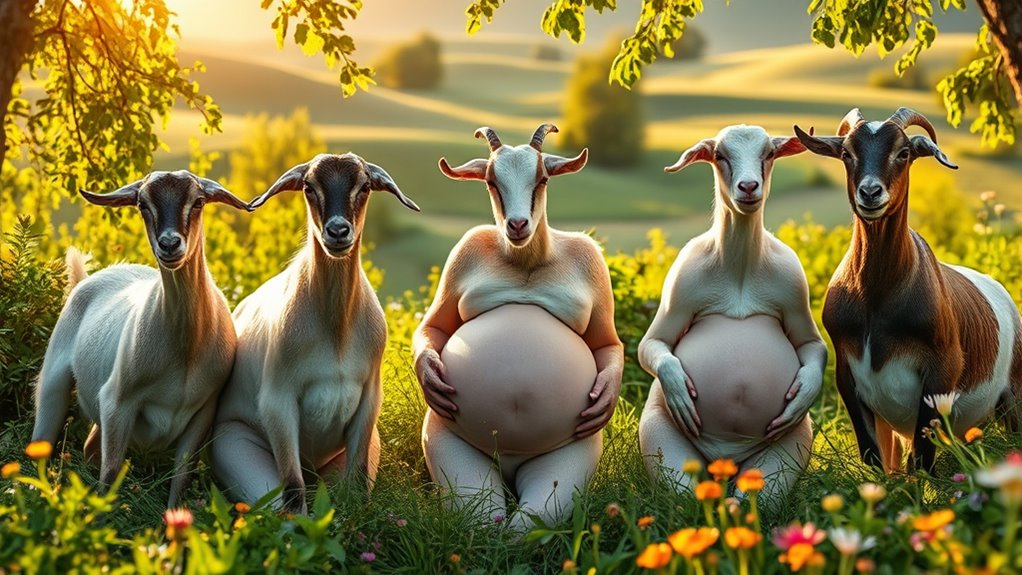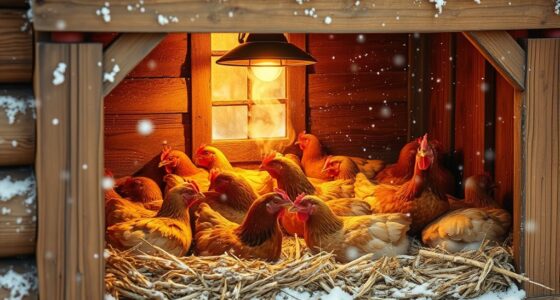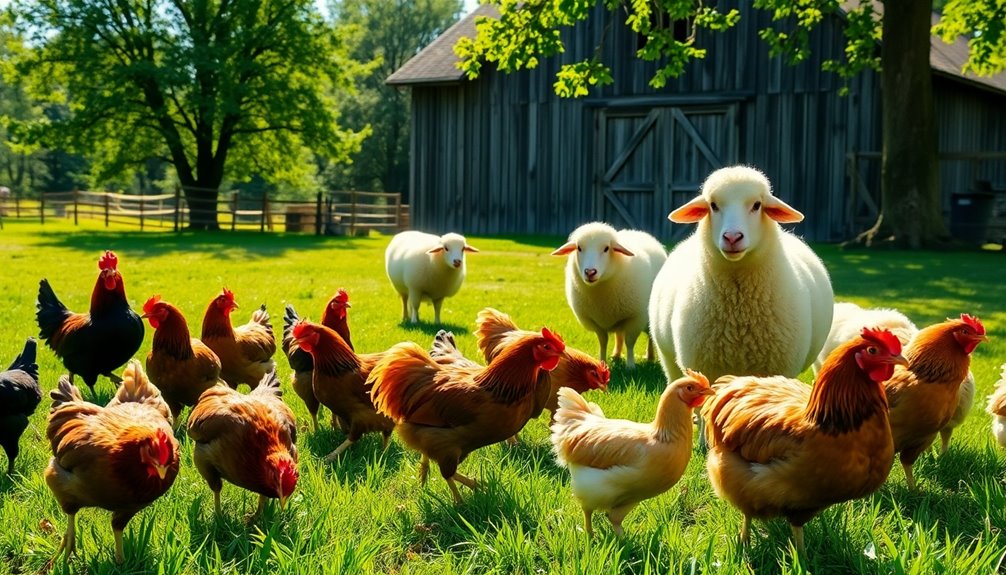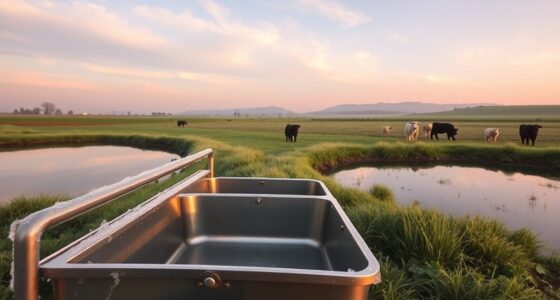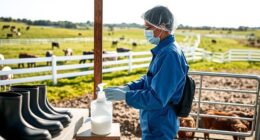Goat pregnancy lasts 145 to 150 days, divided into stages. In the first six weeks, you'll notice missed heat cycles and subtle behavioral changes. From weeks 7 to 12, vital organs start developing, and you can monitor progress via ultrasound. As the fetus grows from weeks 13 to 18, features like hair and horns become visible. In the final weeks, prepare for kidding by creating a safe birthing area. There's much more to explore about each stage!
Key Takeaways
- Gestation lasts 145 to 150 days, with smaller breeds having slightly shorter periods by about 5 days.
- Early signs of pregnancy include missed heat cycles and subtle behavioral changes; nutrition becomes slightly more important.
- By weeks 7-12, major organs form, and the heartbeat is detectable around day 20; proper nutrition is crucial.
- In weeks 13-18, horn pits and scrotum develop; hair growth begins, and ultrasound can reveal vital organ development.
- During weeks 19-24, nesting behavior is observed; prepare a clean birthing area and monitor for signs of labor.
Understanding Goat Gestation Period
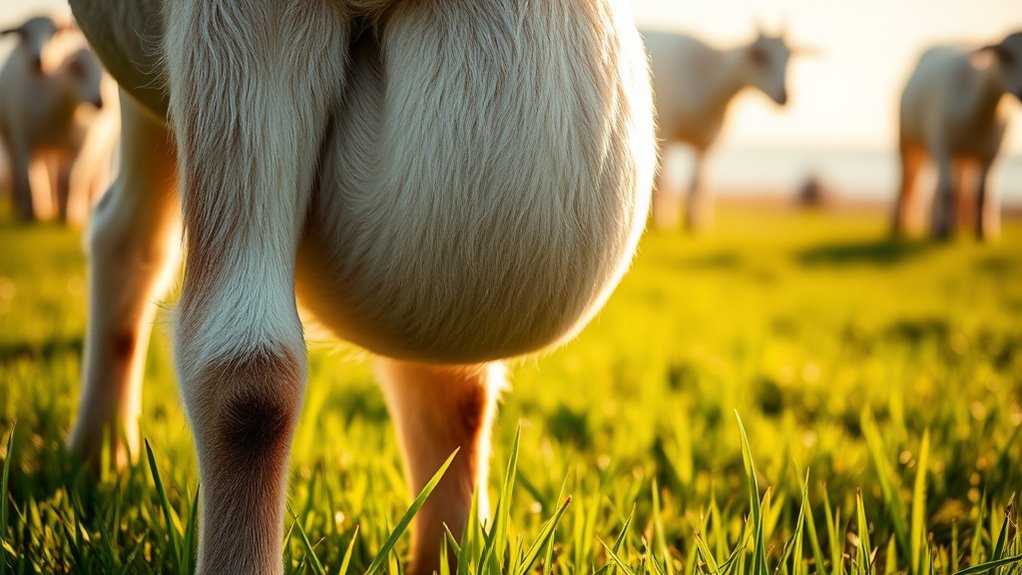
When you're expecting goat kids, it's crucial to understand the gestation period, which typically lasts between 145 to 150 days. This timeframe translates to about five months or 21 weeks.
Keep in mind that smaller breeds often have slightly shorter gestation periods, usually by about five days. Proper nutrition is vital, especially in the last month, to prevent issues like pregnancy toxemia.
Regular health monitoring helps you catch any potential problems early. Additionally, keeping detailed records of breeding and birth dates aids in managing future pregnancies effectively.
Early Pregnancy Development (Weeks 1-6)

Understanding the early stages of goat pregnancy is vital for ensuring the health of both the doe and her developing kids. During weeks 1-6, you'll notice missed heat cycles, indicating your doe may be pregnant. Some behavioral changes might also occur, although they can be subtle.
Nutritional needs increase slightly, focusing on overall health, with essential protein and minerals like calcium and phosphorus supporting fetal development. Regular health checks are crucial to monitor her well-being and detect complications early. Confirm pregnancy through ultrasound or blood tests if needed.
Additionally, managing environmental stressors, providing proper shelter, and ensuring access to clean water will help keep your doe and her kids healthy during this critical period.
Embryonic Development (Weeks 7-12)
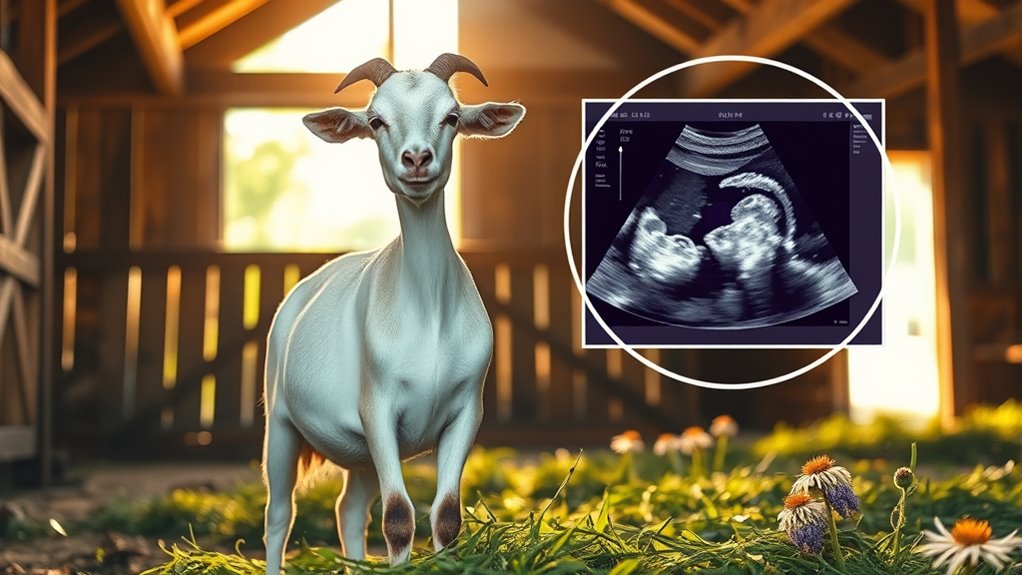
As the pregnancy progresses into weeks 7-12, you'll witness significant changes in your doe's developing embryos.
By day 12, the blastocyst attaches to the uterine wall, marking the start of the embryonic period. During this time, your embryos rapidly grow, nourished by the surrounding fluids. Major organs, including the heart, begin forming, with the heart starting to beat around day 20.
Limb buds become visible between days 28-35, and external features become recognizable by day 42. Maternal health and nutrition are crucial, as hormonal changes support development.
You can monitor progress through ultrasonography, which can detect heartbeats and estimate gestational age, ensuring your doe's pregnancy is on track.
Fetal Development (Weeks 13-18)
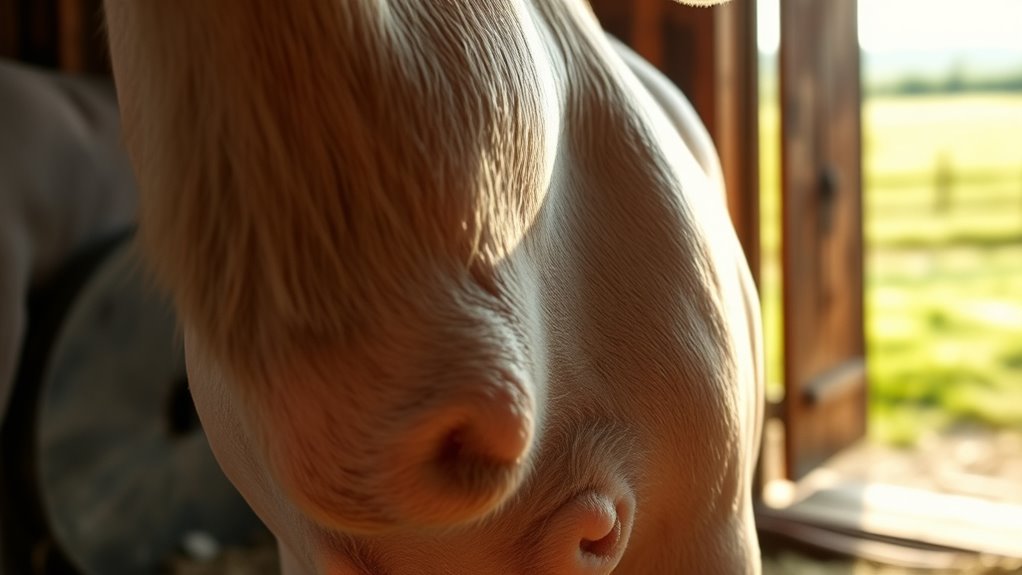
Following the embryonic development phase, fetal development from weeks 13 to 18 brings remarkable changes as your doe's pregnancies progress.
By week 13, horn pits appear, and the fetus continues to grow. In week 14, you can identify the scrotum in male fetuses.
As week 15 rolls around, hair starts growing around the eyes and muzzle. By week 16, tooth eruption begins, and hair growth continues.
In week 17, the fetus's body becomes fully covered with hair. Throughout this period, vital organs like the heart, kidneys, and liver are visible via ultrasound, showcasing rapid growth and increased mobility.
Late Pregnancy Development (Weeks 19-24)
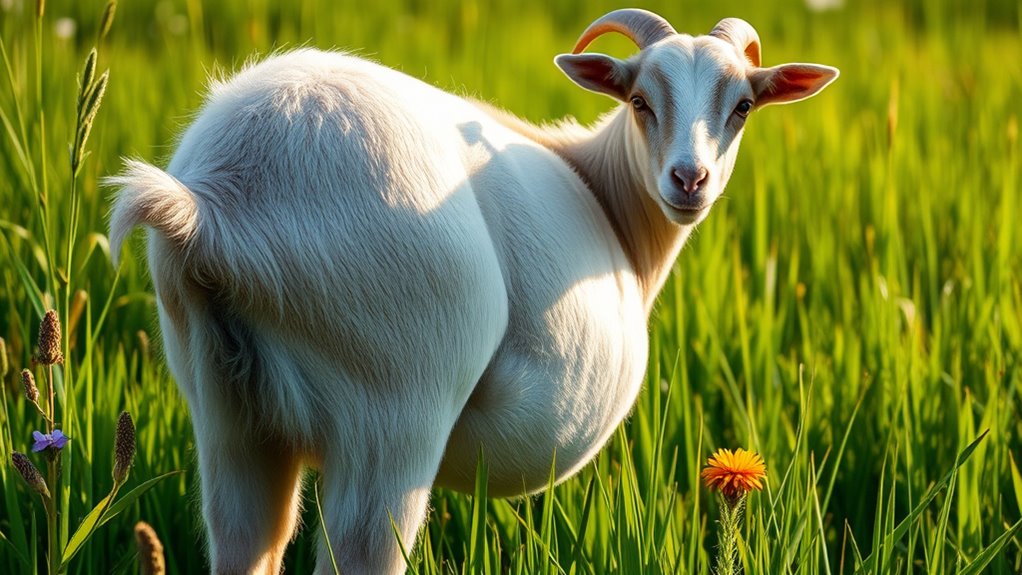
During weeks 19 to 24 of your doe's pregnancy, you'll notice significant physical and behavioral changes that signal the approach of kidding.
Her vulva will swell and start to open, preparing for birth, while you might observe a clear discharge that thickens as labor nears.
Expect her to become increasingly restless, often separating from the herd, and you may hear more vocalizations like bleats and grunts.
She'll likely display nesting behavior, gathering materials to create a safe birthing area.
Keep an eye on her weight and overall health, as monitoring for conditions like ketosis and ensuring vaccinations are up-to-date is crucial.
Prepare a clean, safe area for her to give birth and gather necessary supplies for the newborns.
Nutritional Needs During Pregnancy
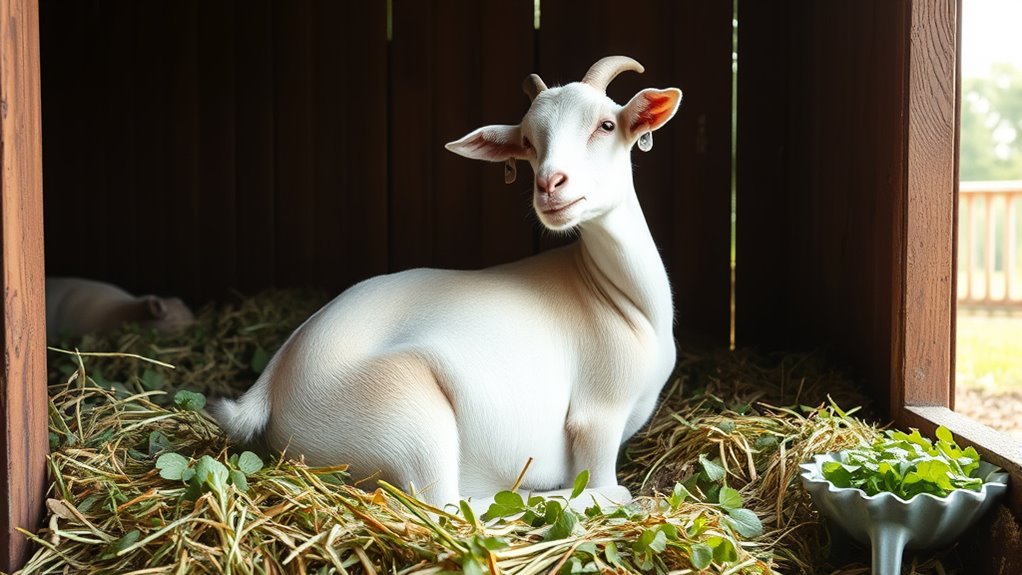
Proper nutrition is vital for your pregnant doe, as it directly impacts her health and the development of her kids.
You'll want to provide an energy-dense diet rich in high-quality forages like legume hays, supplemented with grains or concentrates. Aim for a protein intake of 14% to 16% using sources like soybean meal.
Ensure she's access to a mineral mix tailored for goats, focusing on calcium and phosphorus. Fresh, clean water is essential for her well-being and nutrient absorption.
During early gestation, maintain standard feeding levels, but increase energy and protein in late pregnancy. Monitor her body condition to avoid overfeeding, which can lead to complications during delivery.
Preparing for Kidding
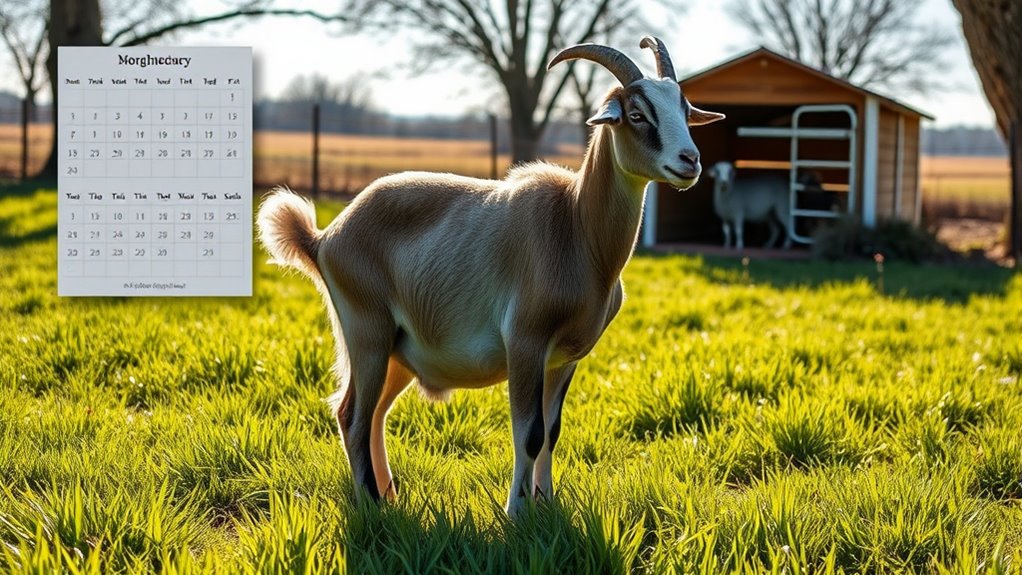
As your doe's pregnancy progresses, getting ready for kidding becomes a top priority. Start by cleaning and disinfecting the facilities to minimize bacterial risks.
Prepare kidding pens for weak kids and ensure they're draft-free but well-ventilated. Stock up on essential supplies like towels for drying kids, puppy pads for cleanliness, and disposable gloves for handling.
You'll also need colostrum replacer in case natural colostrum isn't available. Keep your veterinarian's contact handy and monitor does for any signs of illness.
Lastly, ensure heat sources are operational if it's cold and have lighting ready for nighttime births. By putting these preparations in place, you'll create a safe environment for both your doe and her new kids.
Post-Kidding Care and Monitoring
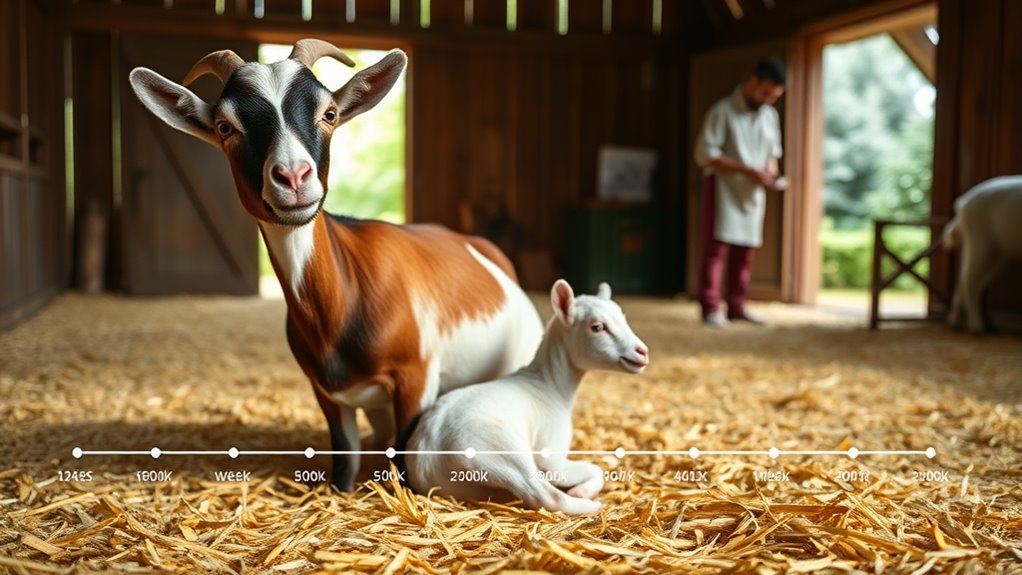
Once your doe has given birth, the focus shifts to her immediate care and monitoring to ensure a smooth recovery and the health of her kids.
Start by providing warm water with molasses or electrolytes to boost her energy and support milk production. Gradually introduce grains to meet her nutritional needs.
Keep a close eye on her udder for signs of mastitis, especially around a week post-kidding, and ensure the placenta passes within 12-18 hours.
Monitor for milk fever symptoms and treat any vulva tears to aid healing.
For the kids, ensure they receive colostrum promptly, assist with breathing if needed, and support bonding with their mother.
Regularly check both for signs of illness to maintain their well-being.
Frequently Asked Questions
How Can I Tell if My Goat Is in Heat?
To tell if your goat is in heat, watch for increased vocalization, as she'll be louder and more vocal than usual.
Notice her tail behavior; it may wag or flag like a dog's.
You might also see changes in her personality, becoming either extra affectionate or aggressive.
Look for a gel-like vaginal discharge and observe her interactions with other goats, as she may mount or display dominance during this time.
What Are Common Complications During Goat Pregnancy?
Common complications during goat pregnancy include retained fetal membranes, vaginal trauma, uterine tears, metritis, and pregnancy toxemia.
You might notice signs like refusal to eat, swelling of the vulva, or abnormal discharge, indicating distress or complications.
Factors like difficult births, breed size, and inadequate nutrition can contribute to these issues.
To manage risks, ensure proper nutrition, maintain a clean environment, and don't hesitate to call your vet if you suspect complications.
Can Goats Breed While Already Pregnant?
In the delicate dance of reproduction, it's important to note that goats can't embark on a new journey while already nurturing life within.
Once a doe is pregnant, her body focuses solely on the current little ones, preventing any additional conceptions until she gives birth.
This ensures that the developing kids receive the attention and resources they need, allowing for a healthier and more successful outcome for both mother and offspring.
How Many Kids Can a Goat Have at Once?
A goat can have anywhere from one to four kids at once, though most commonly, you'll see single or twin births.
Triplets aren't unusual either, but quadruplets are rare. Factors like the goat's age, body weight, and overall health play a big role in how many kids she can have.
If you manage her nutrition well, you might increase her chances of having larger litters in the future.
When Should I Start Separating Pregnant Goats From the Herd?
As the sun sets and shadows stretch across the pasture, you'll want to start separating pregnant goats from the herd about a week before they're due to kid.
This peaceful transition helps reduce stress and provides a safe, quiet environment for the does.
Keep a close eye on them during this time, ensuring they've a clean and comfortable space, allowing you to prepare for the exciting new arrivals.
Conclusion
As you journey through the stages of goat pregnancy, remember that each week is like a chapter in a beautiful book, filled with growth and anticipation. By understanding their needs and preparing for the miracle of life, you'll be ready to welcome those adorable kids into the world. Embrace the excitement and challenges ahead, and know that with love and care, you're nurturing not just goats, but a bond that will last a lifetime.

